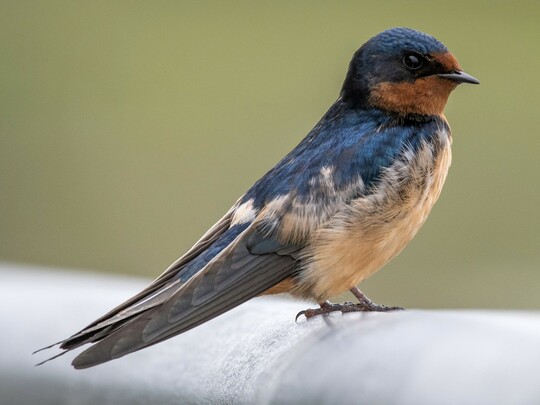Species at Risk: Why they Matter

At some point, in the news or on the internet, you may have heard about species at risk. You may even be aware they are protected by federal legislation but still wonder what makes them special, why are they so important? In this article, we seek to demystify what species at risk are and why they matter.
What are species at risk?
Due to loss of critical habitats, overfishing, disease and other factors that threaten their survival, species at risk are plants or animals that require human intervention to prevent their extinction. Each of these species occupies an essential place in the ecosystem, and their loss can affect the entire ecological community. Species at risk include extirpated, endangered and threatened species, as well as species of special concern.
In Canada, the Species at Risk Act (SARA) protects hundreds of plants and animals from extinction and supports the conservation of biological diversity. The act emphasizes stewardship, Indigenous knowledge and protected areas that preserve the habitats of these species.
Why species at risk matter
One species of bat or bird might seem insignificant, but when it comes to ecosystems, that couldn’t be further from the truth. Plants and animals provide ecosystem services to humans and each other. Each species plays a critical role and the loss of one species can have a ripple effect throughout its ecosystem. Like every part of a cell performs a unique task, each species in an ecosystem is unique and contributes to the system's function. Losing just one species can be disastrous for an ecosystem.
Not just that, consider how the vibrant colours of the barn swallow, the nighthawk’s song or the sight of the northern leopard frog hopping across a marsh enriches our lives and contributes to our well-being and adds to the beauty of our landscapes.
Species at risk are often indicators of something wrong in a habitat. Habitat loss and degradation are the leading causes of endangered species. Disease, climate change, invasive species and natural disasters can all contribute to species' at-risk status. Human activity has contributed to the destruction of critical habitats but that means that we can also be part of the solution. By addressing the problems that led to their at-risk status, we improve the whole ecosystem for plants, animals and humans. By helping individual species thrive, we ensure the whole ecosystem thrives.
What species at risk are found in the Beaver Hills Biosphere?
The Biosphere is home to hundreds of plants and animals, many of which are at risk. Some may become extinct if individuals and organizations don’t step up. By protecting these species, we ensure the Beaver Hills remains healthy and diverse for years to come.
In the Biosphere, some notable species at risk include the barn swallow, the horned grebe, the common nighthawk, the piping plover, the little brown bat, the badger, the western toad, the barred tiger salamander and the northern leopard frog.
From the badger’s pest control skills to the pollination and seed dispersal that birds offer, these species are critical to our Biosphere, our food sources and the beauty of the landscape.
What can be done to help species at risk?
Restoring and protecting the habitats of these precious species is up to all of us. The good news is that collectively, we have the ability to help species at risk, ensuring that future generations enjoy the benefits of healthy, thriving ecosystems through species and habitat recovery. Here are a few efforts underway in the Beaver Hills Biosphere.
Recently, the Biosphere received funding to support stakeholders in exploring areas in the Biosphere that could be designated as Key Biodiversity Areas (KBAs) or Other Effective Area-based Conservation Measures (OECMs) to promote biodiversity. These programs mean improving outcomes for species at risk, as the program focuses on holistic approaches that benefit the whole habitat. OECMs offer alternative conservation strategies to traditional protected areas, endeavoring to build sustained long-term outcomes for the in-situ conservation of biodiversity. OECMs can support species at risk and promote population grown through habitat restoration. Restoring these key areas also ensures that all species who call the area home are able to thrive.
As part of this project, the Biosphere will also be developing a resource to help rural residential landowners in the Beaver Hills steward and manage their properties to support the habitats of these species.
We can all play a role in supporting species at risk. As these efforts get underway more information about how you can get involved will be available at beaverhills.ca/learn/projects.
Learn more about the general status of wild species in Canada.